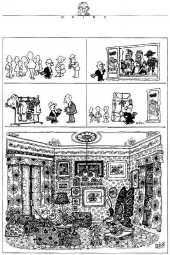| YOUR OPINION
|
 |
|
|
| OTHER EMERGENCIES
|
 |
|

RECYCLINGS
Elia Zenghelis
Aldo Rossi
EMERGENCIES
Price
Nature
CONTACTS
Gracia
Short circuits
LODGING
Circo
Diccionary
L'Informatiu
Oculum
CONTRIBUTIONS
Motoa
Fiorescano
Blevins
Ramírez
CAFÉ-GOURMET
Fisac
Lozano
HOMELESSPAGE
Lenin's corner
ANC
Winter ANC
YOUNG ANIMALS
Winter Animals
ARENA DIGITAL
Wam-l
SPACES
Berlin
CATCH AS
Botta
TRANSLUCENT
Foundations
Wam Links and Guests
Mail to WAM
|
|
 
INTRODUCTION
We introduce in this issue some of the last projects by the Texan architect Martin Price. The
images and the text belong to a lecture given in his last visit to several Spanish cities, in
occasion of an exhibition organized by FISURAS, an independent architecture magazine
also hosted in WAM.
His last project, the Great Frontier Performance facility, under developement right now (1.97) will be featured stage by stage in these pages in parallel with the evolving of the project in Mr Price's office in Arlington.
THE NATURAL WAY OF NATURE
by Martin Price
Natures rhythms are not rhythms of geometrically perfect lines. They do however represent
an order of more chaotic measured as well as spontaneous irregularities.
They relate to the more natural rhythms, motion and feelings of the human experience. Rhythm patterns of human motion are of flowing progressions that gently undulate, branch,
curve and meander.
People do not move in absolutely straight lines or turn corners at ninety degree angles. They move with a gentler change of direction and even walk on adjacent grass
to avoid the unnatural imposition of a right angle intersection of paths.
The inspirational rythmic lines in how nature forms has defined paths of movement, a yin
yang interlocking of materials and shapes, and profiles of a flowing continuity of form in my
works.
To see how nature forms it is necessary to do more than look. We can look and admire the
beauty of the clouds, the mountains, the ocean and the trees. But there is more there that
can also be seen. Nature provides rhythms of gently flowing, unfolding, evolving and
pulsating patterns and lines. These rhythmic patterns and lines create a fluidity of form. Once we focus on the natural patterns in nature we can begin to see the inspirational rhythms in sand dunes, in tree forms, in ocean surf, in cloud formations, in rock strata.
We can see the slow unfolding wavy rhythm of lines that the wind creates as it moves across the sand dunes. We can see the irregular interval rhythm in the lines of tree trunks in a forest. We can see the branching rhythm of lines that extend from tree trunks to limbs, to leaves and to the veins of the leaves themselves. We can see the dynamic flickering rhythm of moving lines in the profile of flames in a fire. We can see the flowing rhythm of the moving line of a wave as it is brought to life and propelled forward by an inner beat, or the rhythm of circular lines in a ripple pattern as water is agitated. We can see the gentle rhythm of the rising and falling line of the horizon that separates the solid land from
the transparent sky.
We can see the syncopated rhythm of lines of stalactites hanging from cave ceilings or icicles hanging from roof edges. We can see the marvelous rhythm of moving, unfolding and changing line of a cloud profile as it pulsates and alters itself as it crosses the sky. We can see the fascinating rhythm of lines that are etched in rock strata by the process of erosion and by the settling of alternate layers of minerals, which even the geologists refer to as the process of rhythmic bedding.
The more perfect imperfect natural way of the human being flows with these more perfect
inperfect rhythmic patterns and lines of nature.
Martin Price
12.96



Images from the exhibition "How nature forms",Museum of Finnish architecture, Helsinki,
1984. (M. Price, architect)





Ringenberg house, Clayton, California. (M. Price, architect)



Fielder Bridge Office building, Arlington, Texas. (M. Price, architect)



Aventine office & hotel complex, La Jolla, California (M. Bernard, F. Rahman, students; M.Price, professor)




Theatre complex, Dallas, Texas. (G. Gatsos, student; M. Price, professor)


Kamionik residential, retail & office complex, Warsaw, Poland. (J.B. Cavos, student; M. Price, professor)


Viking ship museum, Chicago, Illinois. (C. M. Welch, student; M. Price, professor)



Eagleridge ski resort housing, Steamboat springs, Colorado. (M. Price, architect)



Community center, Dallas, Texas. (S. Harvey, student; M. Price, professor)





Temple Beth Salom, Arlington, Texas. (M. Price, architect)




Zoliborz residential, retail & office complex, Warsaw, Poland. (M. Price, R. E. Bell, architects)





Great frontier performance facility, Amarillo, Texas. (M. Price, R. E. Bell, architects)
|



